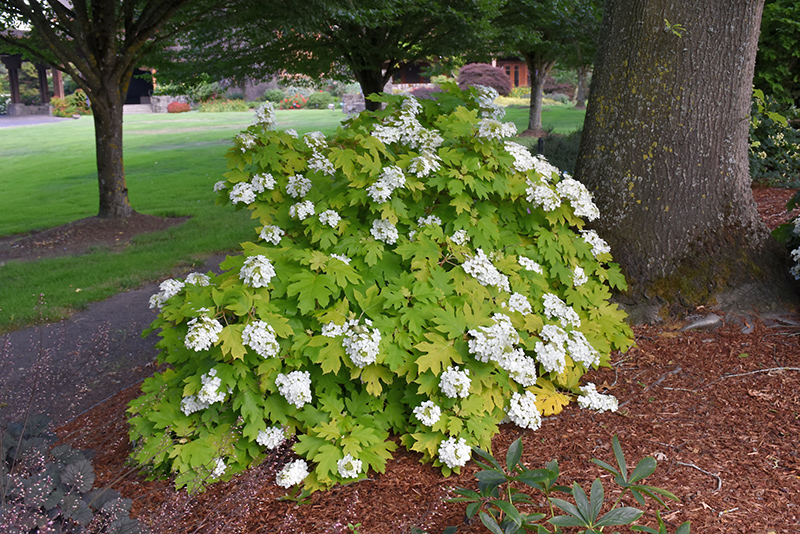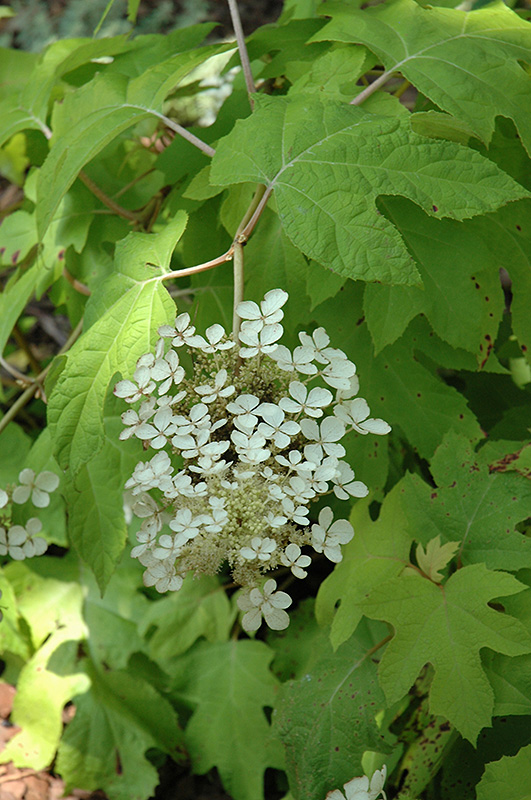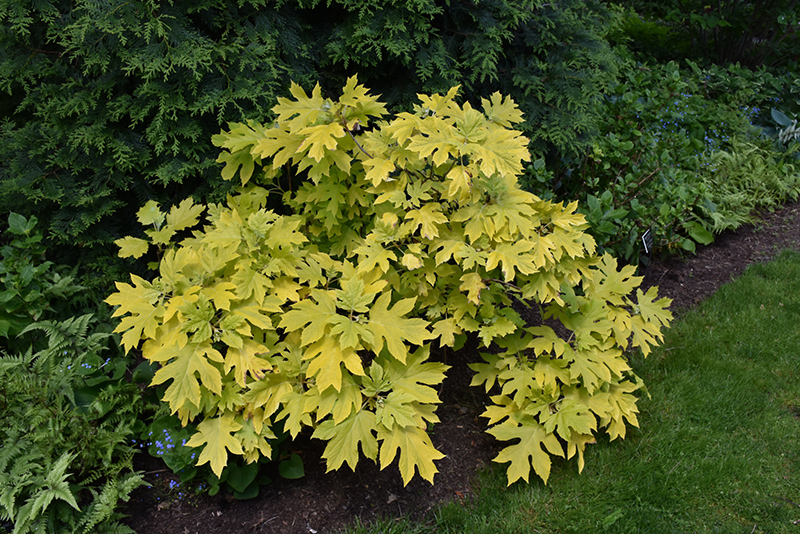>> Home
Little Honey Hydrangea
Hydrangea quercifolia 'Little Honey'
Height: 3 feet
Spread: 3 feet
Sunlight:
![]()
![]()
![]()
Hardiness Zone: 5
Other Names: Oak Leaf Hydrangea
Description:
A choice compact garden or massing shrub featuring showy spikes of flowers which fade from pure white to pink, interesting chartresuse foliage with brilliant red fall color, and papery bark; somewhat coarse in appearance, best used in groupings
Ornamental Features
Little Honey Hydrangea features bold fragrant conical white flowers with pink overtones at the ends of the branches from early to mid summer. The flowers are excellent for cutting. It has attractive chartreuse deciduous foliage which emerges yellow in spring. The lobed leaves are highly ornamental and turn an outstanding red in the fall.
Landscape Attributes
Little Honey Hydrangea is a multi-stemmed deciduous shrub with an upright spreading habit of growth. Its relatively coarse texture can be used to stand it apart from other landscape plants with finer foliage.
This is a relatively low maintenance shrub, and is best pruned in late winter once the threat of extreme cold has passed. It has no significant negative characteristics.
Little Honey Hydrangea is recommended for the following landscape applications;
- Mass Planting
- General Garden Use
- Container Planting
Planting & Growing
Little Honey Hydrangea will grow to be about 3 feet tall at maturity, with a spread of 3 feet. It tends to fill out right to the ground and therefore doesn't necessarily require facer plants in front. It grows at a slow rate, and under ideal conditions can be expected to live for approximately 30 years.
This shrub performs well in both full sun and full shade. It prefers to grow in average to moist conditions, and shouldn't be allowed to dry out. It may require supplemental watering during periods of drought or extended heat. It is not particular as to soil type or pH. It is somewhat tolerant of urban pollution, and will benefit from being planted in a relatively sheltered location. Consider applying a thick mulch around the root zone in winter to protect it in exposed locations or colder microclimates. This is a selection of a native North American species.
Little Honey Hydrangea makes a fine choice for the outdoor landscape, but it is also well-suited for use in outdoor pots and containers. With its upright habit of growth, it is best suited for use as a 'thriller' in the 'spiller-thriller-filler' container combination; plant it near the center of the pot, surrounded by smaller plants and those that spill over the edges. It is even sizeable enough that it can be grown alone in a suitable container. Note that when grown in a container, it may not perform exactly as indicated on the tag - this is to be expected. Also note that when growing plants in outdoor containers and baskets, they may require more frequent waterings than they would in the yard or garden.


